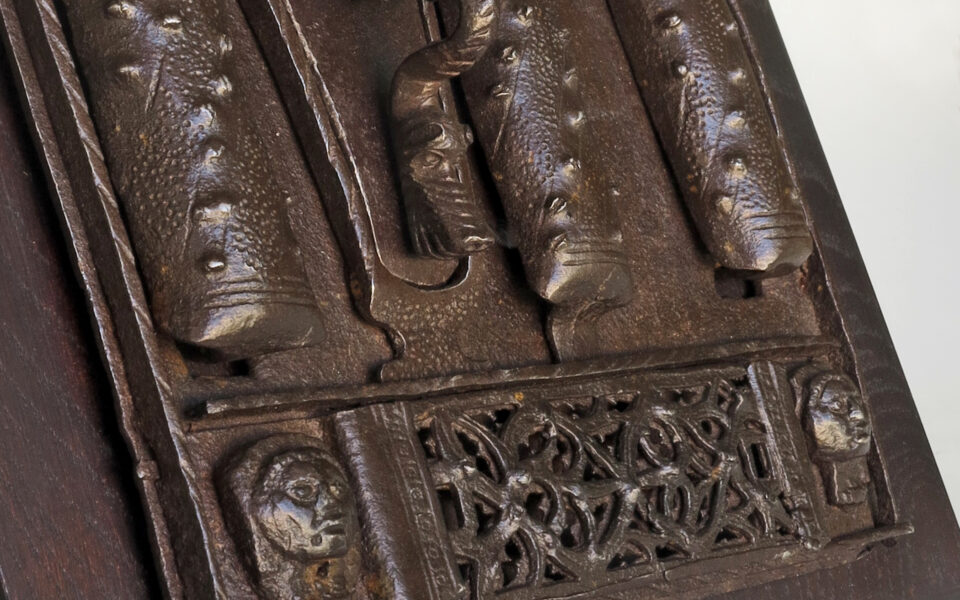
An Appealing Spanish Lock
This intriguing ironwork belongs to the so-called à moraillon kind of locks, designed for closing chests and coffers, and quite common in the Gothic and Late Gothic periods, especially in the French and Spanish areas.
The present one shows a typical quadrangular shape and a warm brown patina; moreover, it has a rather unusual and rare decorative layout.
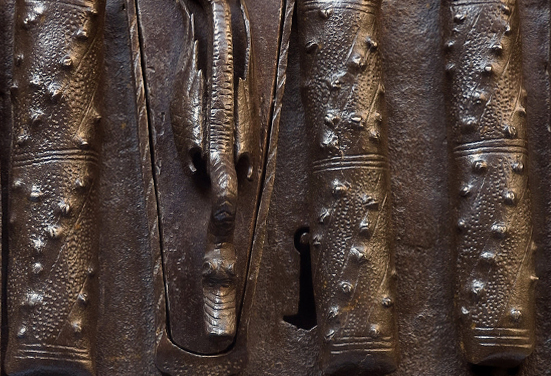
The upper part is marked by three embossed and engraved vertical elements, imitating three knobby trunks wrapped in helical bands: the first and third elements are the staples anchoring the lock to the chest, while the second and tilting one is the keyhole cover; a small winged dragon with knotted tail, carved in full relief, appears between the first and the second element, with the aim to adorn the moraillon below and also to enable the grip of it when the coffer has to be opened.
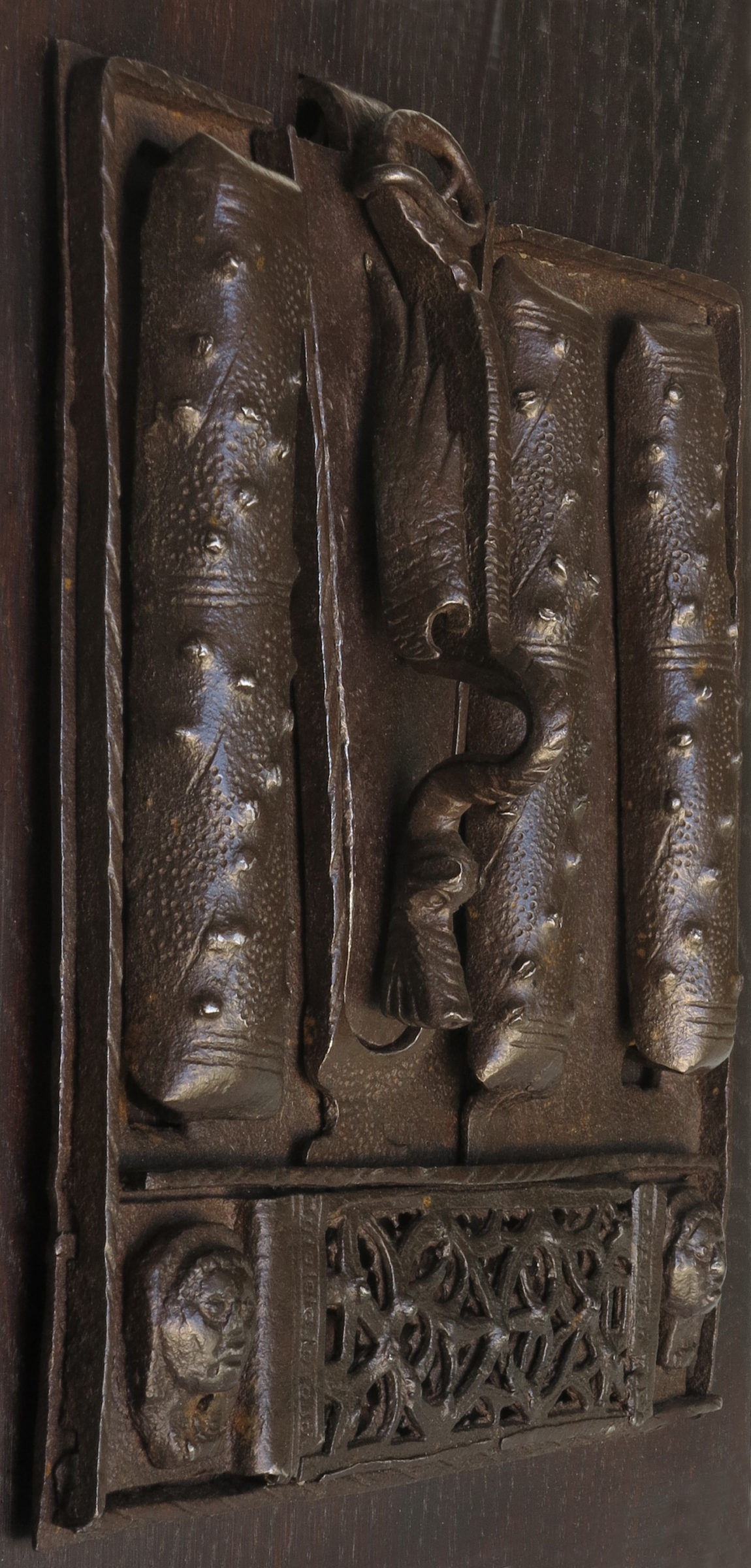
The lower part is a band decorated with two carved grotesque masks, separated by a rectangular plate with an orbe-voie tracery. This type of ornament consists of an overlapping of several pierced plates, each one with a different design, thus obtaining a precious effect imitating a goldsmith’s work.
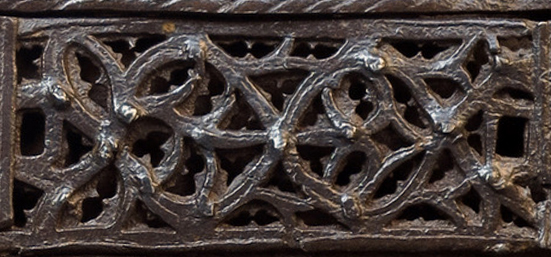
Ironworking in Spain had already reached significant levels during the early Middle Ages, due to the Arabic presence, introducing new and sophisticated techniques; above all, Spanish blacksmiths drew from the Islamic aesthetic the taste for the minute and refined metalworking.
At the same time, the iconographic theme of the dragon enliving this rich lock is omnipresent in the Christian world: used at least since the Romanesque period in the context of a vitalistic conception of ornamentation, it is undoubtedly among the protagonists of the Gothic drôlerie.
Moreover, dragons are recurrent elements in the typical decorative lexicon on locks and doorknockers: as well as heads and monstrous masks, they are elements decorating crossing points – not by chance – and often with an apotropaic meaning.
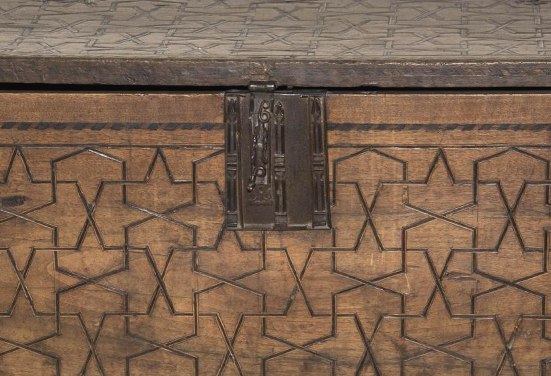
This fertile crossroad of cultures is therefore at the origin of an unparalleled Spanish flair in the art of iron, long-lasting over the centuries, of which this lock is a significant example. A really appealing work, not only for its compositional invention, but also because it shows the simultaneous application of all the major metalworking techniques: embossing, piercing, engraving and full-relief carving.
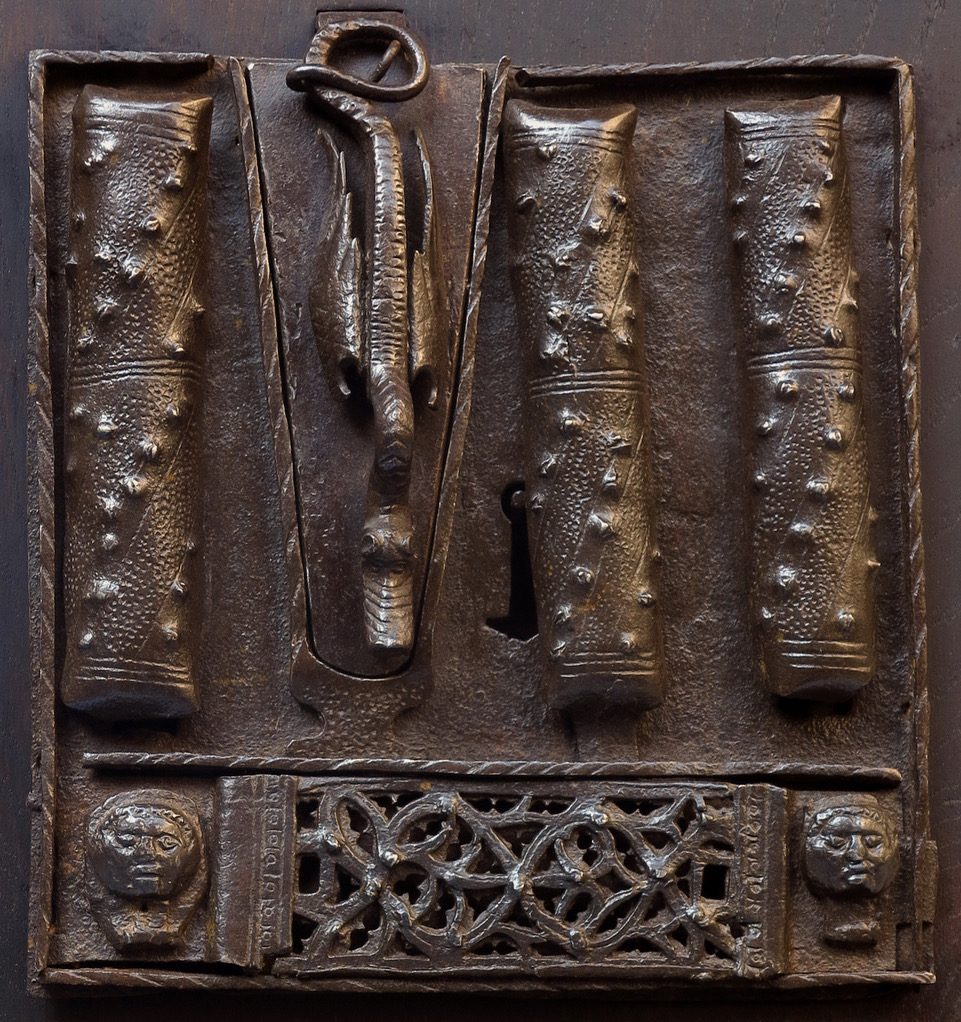
CHEST LOCK
Wrought, embossed, carved and pierced iron
Spain
Circa 1500
Cm 20,5 x 22,5 h
References: Henri René d’Allemagne, Decorative Antique Ironwork, Dover Publ., 1968, Pl. 39; Catherine Vaudour, Clefs et Serrures, des origines au commencement de la Renaissance, Catalogue du Musée Le Secq des Tournelles, Fascicule II, Rouen Offset Fernandez, Rouen 1980, p. 72-75.
© 2013 – 2023 cesatiecesati.com | Please do not reproduce without our expressed written consent
Alessandro Cesati, Via San Giovanni sul Muro, 3 – 20121 Milano – P.IVA: IT06833070151